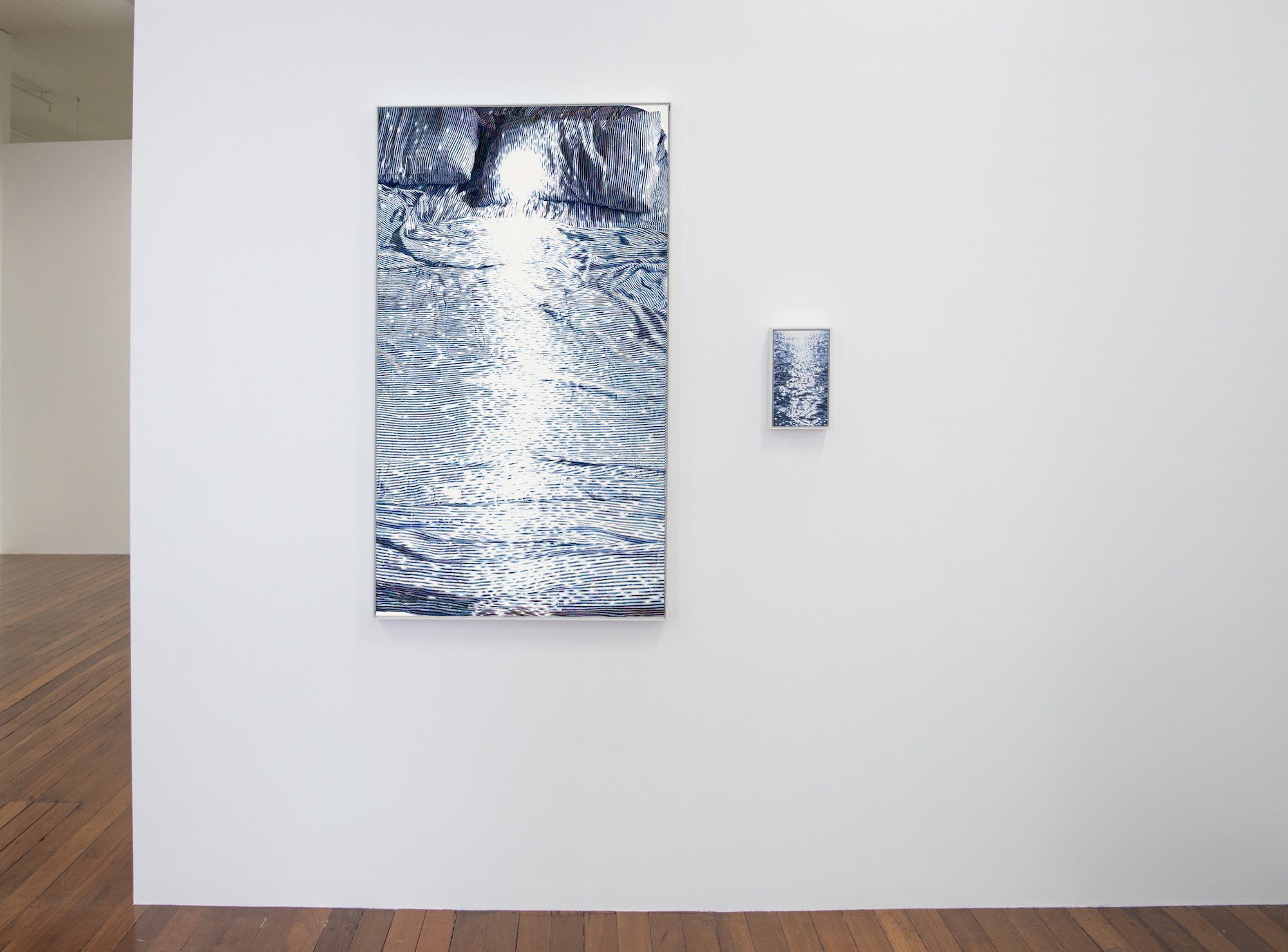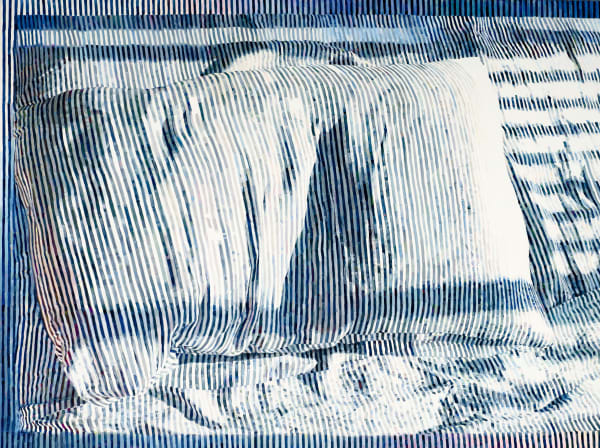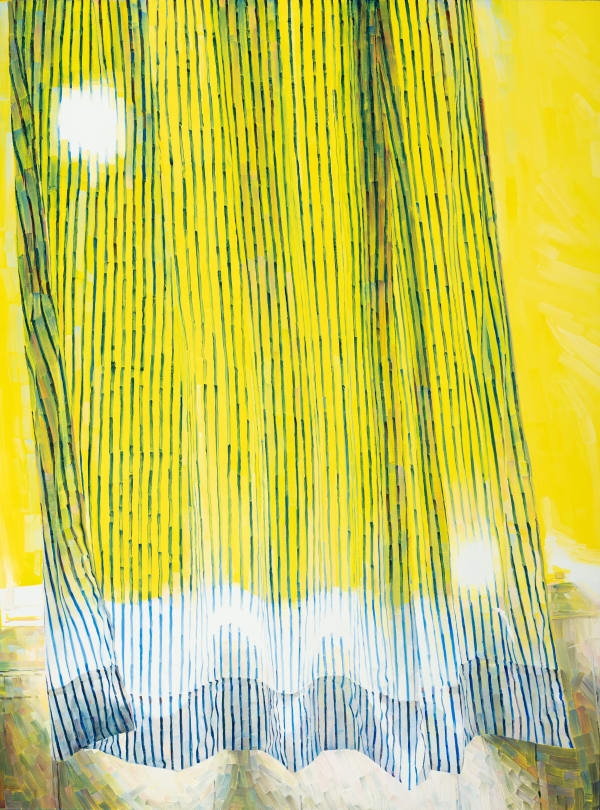-

-

-

-
'At the beginning 2017 I had been trying to paint the sun for a while and it was proving difficult (being a kind of directly unobservable subject!), so I was looking for ways to paint it less directly that still held its intensity.
Looking at the swimming pool at my uncle's house one day I saw that the sun was sort of perfectly held on its surface, like the pool's tiles were a net that caught it. The fact that the sun is an object 'made of' light, a reflection of that light sort of made it interchangeable with the original sun in my mind, not as a copy but a new manifestation, a new sun.'
-

-
'I started thinking too that large bodies of water were sort of proxies for the sky. Both are these wide monochromatic planes that have a complicated kind of depth. Which by that logic, also make them proxies for paintings.''
-

-

-
The light inside a grid.
'When I was very young, someone was there to tell us that we revolved around the Sun, and that its light is the light by which we live and see. Glancing over our shoulders to squint painfully at this unseeable glittering monolith, I saw that this was true.' – Holly Anderson
Sunlight is inextricable from vision. It is the mould from which our eyes are cast, the point from which our world is drawn, or perhaps, painted. Theories of light are often in essence theories of vision, or vice versa. The way light can be seen emitted, reflected or scattered can be explained by a formation of waves that enter the eye to be read by two lenses at the back of the skull. But this explanation belongs to the anatomist. The way in which the mind interprets a sensation caused by light, and relates it to other visual and non-visual experiences of the world, falls within the domain of the artist.
Holly Anderson is an artist fascinated by the Sun. Her work affirms sunlight can be both material and immaterial, thing and non-thing, a pleasurable warmth and a destructive force, an index for the passing of time and an inference to eternity spread uncannily through the every day. Anderson engages a cosmological spectre hiding in plain sight; an unforgiving Queensland sun her hyperobject. In new paintings, Anderson observes moments where this strangeness in sunlight becomes glaringly present. A bright apparition peeps through pale pink blinds, geometric formations flash on the surface of a pool. The Sun flickers on her canvas, defined only in white negative space, and we find a rare opportunity to look, for once unblinded, into its shining power.
In this exhibition, the grid is a form used to hold and support the Sun’s light. Anderson’s monochrome planes of square tiled swimming pools, striped bedclothes and blinds describe a gridded, map-like world. Water in Anderson’s pools is accessed through a geometric painterly logic, observing the odd incomprehensibility of its fast moving surface.
'Looking at water seemed to lead me right up to the edge of what I could perceive, showing me the shape of my perceptual limits, their soft outlines a new part of myself to recognise.'
These densely patterned surfaces have their own dazzling quality, the eye struggling to rest easily upon a strobing sea of stripes and squares. Where these tightly wound systems fall away, the eye is alerted to its own expectation for pattern, to the sensation of seeing. This optical play is analogous to Anderson’s aim to imitate the perceptual effects of bright sunlight in painting.
From behind the glare of a white hot sun, Anderson casts familiar domestic subjects in a new kind of Australian landscape. The tiles of a swimming pool broken by a diver, wave like bedclothes parting to form a tall path of light, suburban blinds hued with the golden haze of a sinking sun. These are familiar scenes made strange under Anderson’s brush. They remind us that the conditions of sunlight permeate every lived experience in a myriad of ways– affecting our visual, proprioceptive, temporal or imaginative sensibilities. Sunlight in these works accentuates the limits of visual perception, proposing a bodily involvement in landscape that is stranger than the eye expects.
You may find yourself casually cross-eyed for the time you’re with them. Your retina burnt under lucent nets. Each work presents a flickering moment lived under the Sun, drawing us towards that stupefying sensation of a brief flash of sunlight to the back of the retina.
-




















